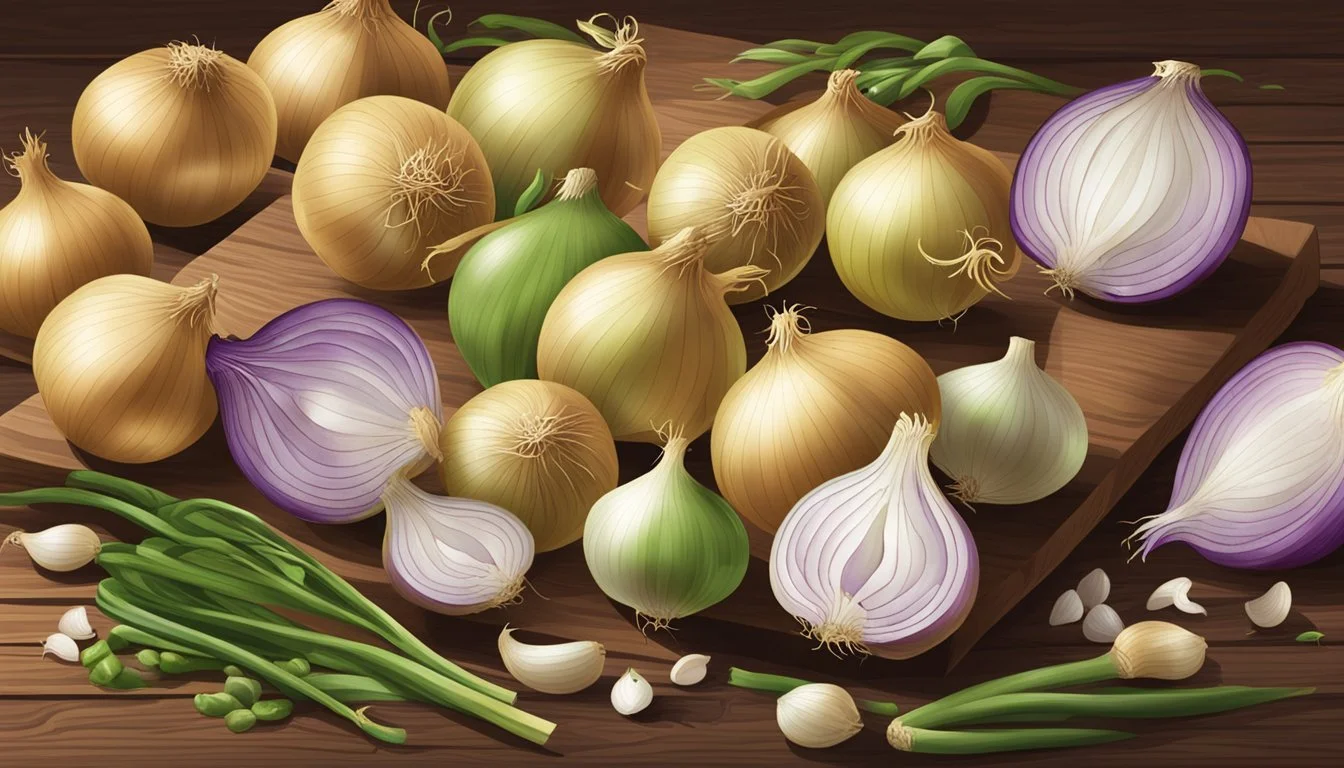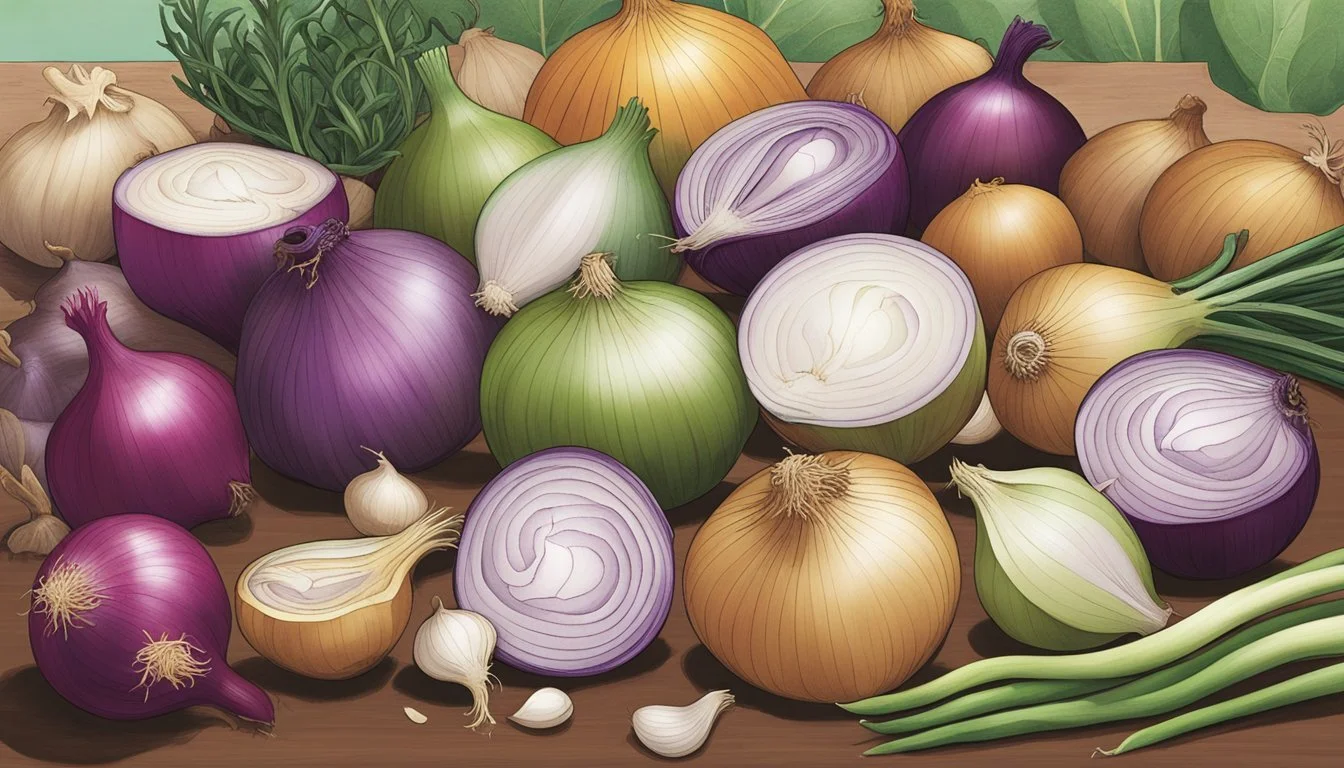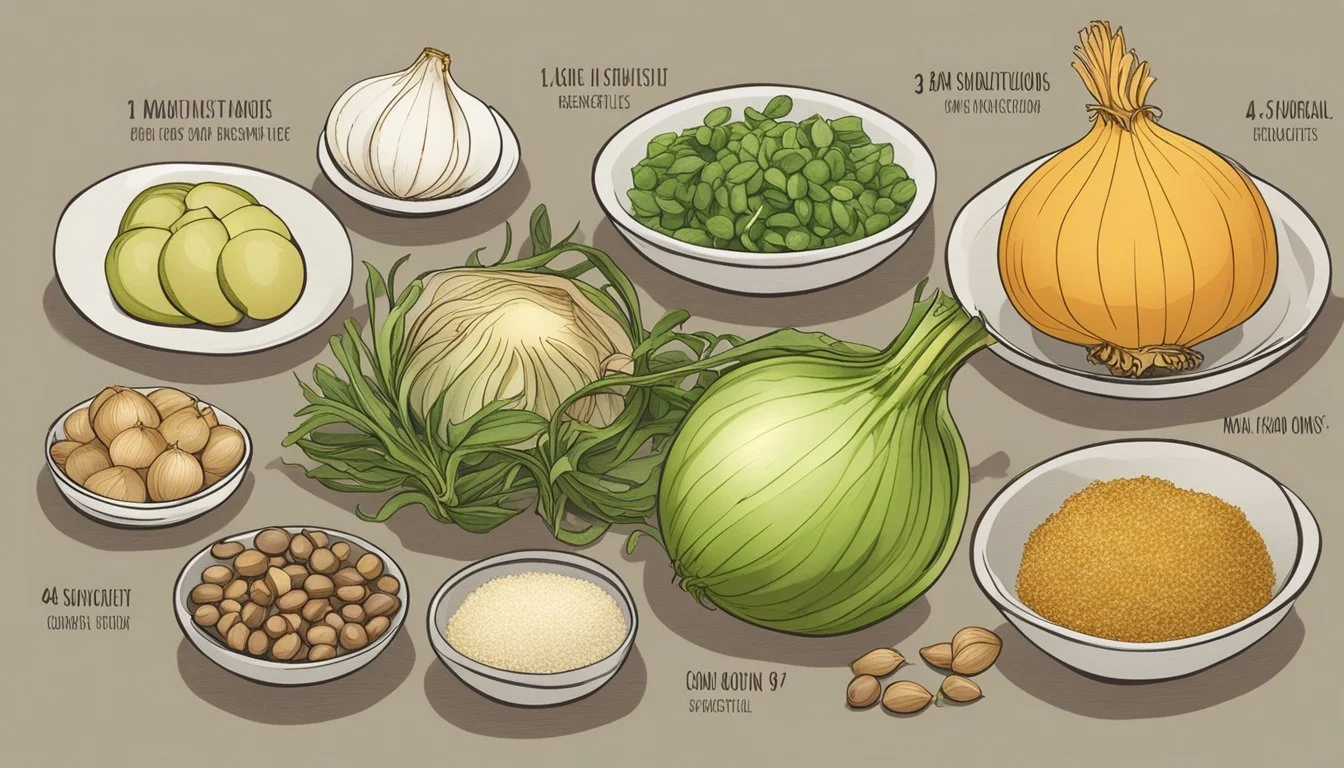Maui Onions Substitutes
Best Alternatives for Cooking
Maui onions bring a unique, sweet flavor profile to various dishes, making them a cherished ingredient in many kitchens. Yet, they can be hard to find outside of Hawaii. When a recipe calls for Maui onions, knowing the right substitutes can save your dish.
White onions, with their mild flavor, are one of the closest substitutes for Maui onions. They can be used in a 1:1 ratio, ensuring your stir-fries, soups, and roasts maintain a similar texture and taste. Additionally, garlic, while more intense, can also stand in for Maui onions in savory recipes if used sparingly to avoid overpowering the other flavors.
For those preparing raw dishes like salads and salsas, choosing Walla Walla onions or scallions can add a refreshing touch. These substitutes offer the desired mild sweetness, seamlessly replacing Maui onions and enhancing your cuisine with their delightful taste.
Understanding Maui Onions
Maui onions are prized for their unique combination of flavor, texture, and nutritional benefits. Grown in a specific region, these sweet onions shine in various culinary applications, from raw to cooked dishes.
Characteristics of Maui Onions
Maui onions exhibit a yellowy-white color and are shaped like a slightly flattened globe. They are known for their high water and sugar content, contributing to their distinctive sweetness and mild flavor. Compared to other onions, Maui onions have a lower sulfur content, which significantly reduces the pungent taste and aroma typically associated with onions.
The texture of Maui onions is exceptionally crisp when raw, but they become soft and caramelized when cooked. These unique characteristics make them highly versatile in different culinary applications.
Culinary Uses of Maui Onions
Maui onions are incredibly versatile in the kitchen due to their sweet and mild flavor. When used raw, they add a crisp and refreshing bite to salads and sandwiches. Their low sulfur content makes them a great addition to dishes where a less pungent flavor is desired.
Cooking Maui onions brings out their natural sweetness and allows them to caramelize beautifully. They can be roasted, grilled, or sautéed, enhancing both their flavor and texture. These onions are also perfect for use in salsas, marinades, and soups, offering a sweet contrast to richer ingredients.
Nutritional Profile of Maui Onions
Maui onions are not only flavorful but also nutritious. They are low in calories and rich in vitamins like vitamin C and vitamin B6. Additionally, they contain beneficial minerals such as potassium and manganese. Their high water content helps with hydration.
These onions possess antioxidant properties and contain compounds that may help reduce inflammation. They are also a healthy choice for those following specific dietary restrictions, being both fat-free and cholesterol-free. Eating Maui onions can contribute to a healthy diet, providing essential nutrients without adding unnecessary calories.
Maui Onion Substitutes
When Maui onions are unavailable, several excellent substitutes can replicate their unique sweetness and mild flavor. Below, you’ll find various options from other onion varieties to non-onion alternatives that work well in many dishes.
Sweet Onion Varieties
Vidalia Onions: Originating from Georgia, Vidalia onions are known for their sweetness and lack of pungency, making them one of the closest alternatives to Maui onions. They work well in salads, sandwiches, and any dish requiring a raw, mild onion.
Walla Walla Onions: Grown in Washington state, Walla Walla onions share a similar sweetness and mild taste. They are perfect for grilling, sautéing, or using raw in dishes where you want to maintain a delicate flavor.
Spanish Yellow Onions: These are slightly stronger than Maui onions but still possess a mild sweetness. Spanish yellow onions are versatile and can be used in various recipes, especially those that involve cooking, like soups and stews.
Other Onion Substitutes
White Onions: White onions are another suitable substitute and can be used in a 1:1 ratio. Their flavor is a bit more pungent, but they maintain a nice sweetness when cooked, making them ideal for stir-fries and roasts.
Red Onions: Although they have a bolder flavor, red onions add a pop of color and a slight sweetness to salads and salsas. Their vibrant color and crisp texture can enhance the visual appeal and taste of many dishes.
Yellow Onions: These are common and easily available. While more pungent than Maui onions, they can be used in cooked dishes like caramelized onions, soups, and casseroles where the sweetness deepens upon cooking.
Non-Onion Alternatives
Fennel Bulb: With its crisp texture and slightly sweet, anise-like flavor, fennel bulb can substitute for Maui onions in raw dishes like salads. Thinly sliced fennel can add a refreshing and unique taste.
Celery and Carrots: When combined, celery and carrots can mimic the texture and subtle sweetness of Maui onions in cooked dishes. This blend works well in soups and stews.
Bell Peppers: Especially the yellow and red varieties, bell peppers provide sweetness without the onion flavor. They can be used in roasted dishes, stir-fries, and salads for a crunchy and sweet alternative.
How to Choose a Substitute
Choosing the right substitute for Maui onions requires considering both flavor profiles and texture, as well as the cooking methods used in your recipes.
Considering Flavor Profiles
Different onions offer unique flavor profiles. For recipes that require sweet and mild onions, options such as Vidalia or Walla Walla onions can be ideal. These onions have a natural sweetness that complements dishes like sandwiches, salsa, and raw use in salads.
Garlic is another option, though it has a more intense flavor. Use it sparingly to avoid overpowering the dish. Bermuda onions provide a robust onion flavor but are slightly less sweet.
To match the unique flavor profile of Maui onions in savory dishes, consider white onions. They have a sharper taste but can balance well when combined with other ingredients.
Texture and Cooking Methods
Texture and cooking methods are crucial in selecting the right substitute. For French onion soup or caramelized onions, choose onions that maintain their structure when cooked, like yellow or white onions.
Scallions or green onions add crunch and subtle onion flavor, making them suitable for raw dishes and garnishes. In recipes calling for sautéing or frying, red onions are a versatile option that can be cooked or used raw.
For roasting or grilling, consider yellow onions for their ability to hold up under heat, while maintaining sweetness. Minced onion flakes or dried onions can be good alternatives for soups and stews where fresh texture is less critical.
Substitute Essentials
Selecting the right substitute for Maui onions can make a significant difference in your dish. The right choice depends on what you're making and how you need to prepare the substitute.
Preparing Substitutes
When replacing Maui onions, the preparation method is crucial. Vidalia onions are a fantastic substitute since they share a similar sweetness and can be used raw in salads, sliced for sandwiches, or caramelized for soups and sauces. White onions can also be used, but they have a slightly stronger flavor.
Red onions offer a distinct color and can be eaten raw in salads or grilled. Green onions or scallions are best chopped and used fresh, adding a mild, slightly peppery flavor to dishes. Bermuda onions can be a suitable choice, especially when sliced thin and added to recipes where texture is important. For recipes requiring a distinct taste, consider using ingredients like leeks or fennel, each providing unique flavors and textures.
Quantity and Conversion
Understanding quantities and conversions is critical for substituting Maui onions effectively. Generally, substituting Vidalia onions or white onions involves a 1:1 ratio, meaning if a recipe calls for one Maui onion, you can use one Vidalia or white onion.
For red onions, you might want to use a bit less due to their more pungent taste, perhaps ¾ of a red onion for one Maui onion. Green onions should be used with caution due to their milder flavor; you might need more to match the taste, around 1 ½ times the quantity. When using leeks, consider that only the white part is used for a closer approximation in flavor, and adjust quantitatively to about 1 ½ times the amount specified for Maui onions.
Fennel, with its unique anise-like flavor, should be used in smaller amounts relative to the dish's other flavors, usually in a ½ to ¾ ratio. Always taste and adjust to ensure the balance of flavors in your dish.





